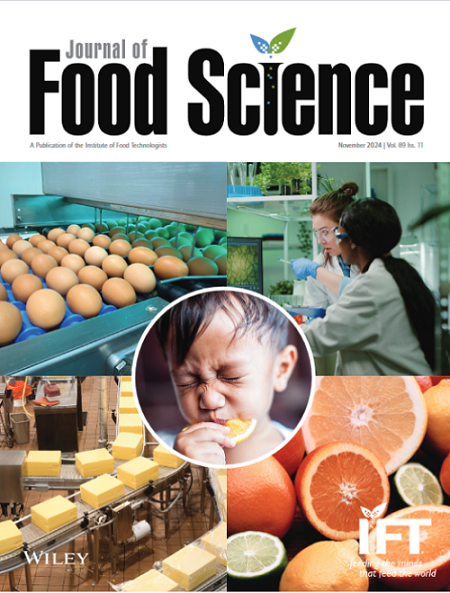Improving the quality and flavor of radish paocai by inoculating with Lactobacillus plantarum-1 and Leuconostoc mesenteroides-7
Abstract
A compound fermentation of Lactobacillus plantarum-1 and Leuconostoc mesenteroides-7 was applied to radish paocai. The impact of this compound fermentation on the quality and flavor of radish paocai was evaluated by measuring physicochemical indicators, texture, free amino acids, organic acids, and other parameters using commercial and natural fermentation as controls. The group inoculated with the mixed starter (TS group) matured by day 6, exhibiting significantly higher total acid content compared with the control groups. The lactic and acetic acid levels in the TS group were notably higher at 1.72 ± 0.13 mg/g and 1.32 ± 0.15 mg/g, respectively, than in the natural fermentation (CK) group. Additionally, the mixed starter accelerated the fermentation rate and reduced the bitter amino acid level. A total of 54 volatile flavor compounds were identified across all groups during fermentation. Key flavor substances, such as D-terpene diene, methyl disulfide, dimethyltrisulfide, and 2,4-di-tert-butylphenol, were abundant in radish paocai, enhancing the fermented flavor. Sensory analysis showed that radish paocai fermented with the mixed starter was more distinguishable in flavor. Radish paocai fermented with a mixture of L. plantarum-1 and L. mesenteroides-7 exhibited improved quality and a distinctive, favorable flavor. A mixed starter is recommended for the industrial production of high-quality paocai.
Practical Application
This study revealed the enhancement of quality and flavor of radish paocai by a mixed starter, particularly in terms of extending flavor complexity. The findings support controlled fermentation in the industrial production of paocai.

 求助内容:
求助内容: 应助结果提醒方式:
应助结果提醒方式:


